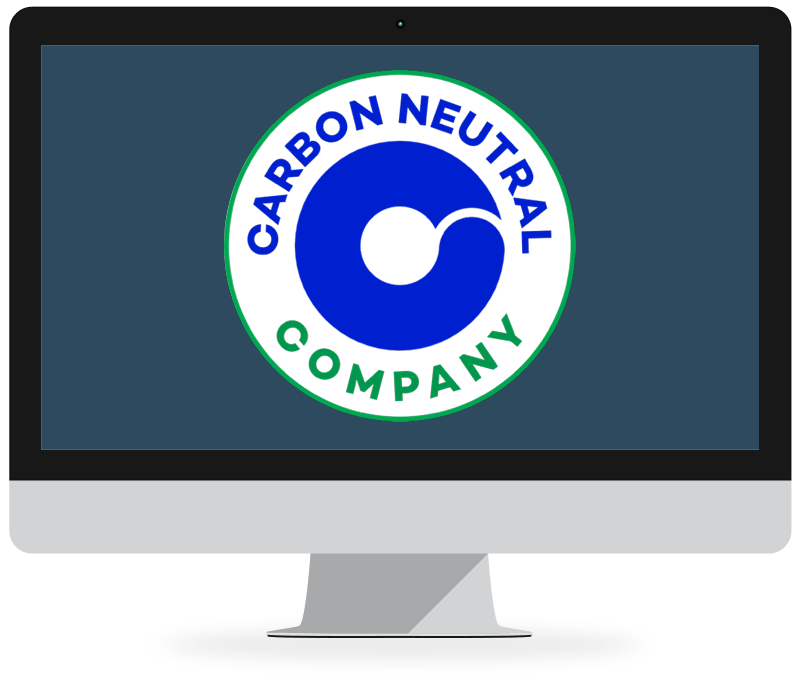A person’s imagination, creativity, courage, and grit can create the difference that differentiates itself from run of the mill products and services, and helps it to rule people’s imagination, and aspirations. You review past data of campaigns and suggest where your marketing money needs to be spent. The purpose of any data and any system is to enable your business and be part of your decision support system. Unfortunately, such ecosystem to support such moonshot technologies is not very common in all the geographies, and the struggle is unduly lopsided. In these uncertain times, energy businesses adapt their strategy and look to artificial intelligence and big data to improve energy forecasts and company earning based asset pricing.
Artificial Intelligence
Artificial Intelligence (AI) is the more extensive idea of machines having the capacity to do work in a way that we would consider “savvy”. Machine Learning is a present subset use of Artificial Intelligence. That is, all machine learning considers AI, yet not all AI considers machine learning. Machine learning is just to let the machine have the capacity to give machines access to information and let them learn for themselves. Machine gaining came straightforwardly from psyches of the early AI swarm, and the algorithmic methodologies throughout the years included choice tree learning, inductive rationale programming, grouping, support learning etc.
Change in the energy markets is inevitable, is happening right now and standing still is not an option. Mergers and acquisitions between energy and artificial intelligence or big data companies shot up over the past year as renewable energy firms work to better manage fluctuating production. Such exponential technologies that have the potential to transform the world we live in, not necessarily have to be from Google X, or spawned by AstroTeller.
Business intelligence is a very broad term that means using the data available to your organization to make factually based decisions. Using Artificial Intelligence in renewable energy production prediction, energy grid balancing and next generation understanding of energy consumers will increasingly automate operations in the solar and wind industries, and boost efficiencies across the renewable energy sector. Zorays Solar Pakistan resolves to work on solving humanity’s grand challenges using exponential technologies such as blockchain, machine learning and business intelligence using data-driven narrative. We create customized quotes based on online rates changing through various supplier worldwide and at the same time keeping in view consumer behaviour trends through our hundreds of requests for quotations where we invite two different parameters as inputs to study the load profile of our customers. Within split seconds, through our classification algorithms (k-mean) we are able to generate a quote for you as our esteemed customer. We take pride in customer segmentation. However, subject to machine learning and artificial intelligence complexities, it is further optimizable according to your budgetary needs.
Energy, like any other product has seen a rise in differentiation in terms of brands, usage plans and sources of energy. Digitalization, renewables and DERs, a smarter grid and rise of platform-based models mean that operators will need to better leverage data and analytics to improved operational and business performance. The competitive advantage of cloud and edge computing will eclipse the limitations of legacy systems. More power producers, utilities and grid operators are adopting strategic digital initiatives to change their business models to compete in a radically changing power market. This will further accelerate industry change and hasten the industry-wide move to digital. In the past Zorays Solar Pakistan has collaborated with students of King Fahad University to use predictive models (deep learning through monte carlo algorithm) forecasting which energy sources to use when while in a Wind Hydro Hybrid Energy System and submitted a technical paper read in IEEE conference.
Leading on climate isn’t just a moral imperative—it’s the practical thing to do. We cannot solve our problems with the same thinking we used when we created them. Purely from an economic standpoint, clean technology is winning. The momentum is undeniable. We have more effective energy-storage and we now have AI, IoT and cloud solutions that promote energy efficiency. Zorays Solar Pakistan has a willingness to use AI and has enable bayes algorithm in the past to make sure that DC solar solutions meant as CSR for one of our clients was not taken out of the periphery where it was intended to be used.
The cost of solar continues to decline rendering fossil fuels impractical and even unviable as a future energy source. Technological progress of this size cannot be undone by a shortsighted policy reversal. We know it, our investors know it, our competitors and our customers know it. Artificial intelligence (AI) will increasingly automate operations over the next several years in the solar and wind industries and boost efficiencies across the renewable energy sector, according to a new DNV GL position paper.
Energy Forecasting – Industry data is used to train AI algorithms to make accurate forecasts, helping to inform power supply and demand,
Energy Efficiency– AI is used to track and optimize how energy efficiency,
Energy Accessibility – AI is used to model utility cost savings and provide recommendations for smart home investments
Renewables and DERs – Industry-wide Impact
Renewable energy is undergoing a paradigm shift as more utility-scale wind and solar reach grid parity by driving lower cost curves and providing alternative energy options to traditional energy generation sources. The ability of analytics to accurately predict and maximize these sources, while balancing integration of traditional power generation, will define those who will successfully navigate this change. Zorays Solar Pakistan has used regression models to find out the missing chains in the process of delivering its goods effectively.
The rise of intelligent grid technology, two-way power flows and greater quality power delivery is transforming the grid and fueling innovation that will challenge incumbent business models. There will be an unprecedented number of new and innovative applications of AI for the energy industry this year, from remote monitoring of transmission assets by drones to new deep-learning capabilities for asset monitoring and performance.
These technologies can be scaled up or down for other commercial applications. The first to complete a cost effective integrated IOT energy platform for homes and business. All this technology is in one panel not fragmented. A very low cost and powerful ecosystem infrastructure. The phone, internet, TV, safety, hub router, smart programmable electrical breakers, sub metering, Utility meter and multichannel communication inside the home/ business -pioneers of smart homes/business and IOT with analytics etc. We have provided a powerful low cost last mile broadband solution meshing ultra-broadband from these smart panels wirelessly without need of spectrum back haul all in one panel. These types of systems give you complete control by circuit level at very low cost . These ecosystems are able to ration power not just turn on and off. In many case eliminate rolling brown outs and blackouts. This can enable all wireless transmissions types.
How companies are investing in Business Intelligence?
Traditional energy players are looking to analytics and automation to improve operations and manage distributed resources. The energy sector is investing heavily in Artificial Intelligence and BigData to better manage intermittent renewable energy generation. End users have an increasing array of choices that will lead them to seek out power providers that offer them control over their energy usage via well-designed mobile and other customer experiences. Non-utility companies and digital disruptors like Nest are poised to grab 20% of the retail energy market.
Anticip8
Anticip8’s mission is accurate, micro weather prediction that can help renewable energy producers (solar, wind). Uncertainty about tomorrow’s forecast (cloud cover, rain) reduces the ability of suppliers to commit their full capacity, especially for wind farms. This leads to less renewable energy in the grid, and higher prices. Anticip8 offers low-power, low-cost field sensors with novel computing architecture and high resolution spatial and temporal modeling to increase suppliers’ confidence when committing loads to the grid. They’ll build better, decentralized ground-up weather models that update every 10 minutes.
Xcel
In Colorado, energy provider Xcel is implementing AI in an attempt to address these challenges. Through the National Center for Atmospheric Research’s new AI-based data mining method, Xcel was able to reportedly access weather reports with a higher level of accuracy and detail. Xcel reports that wind power has doubled in Colorado since 2009. Earlier this year, Xcel reported plans to expand its wind farms by 50 percent by the year 2021.
Nnergix
Nnergix is a data mining and web-based energy forecasting platform which pools data from the energy industry. The company reportedly combines satellite data from weather forecasts and machine learning algorithms trained on industry data to make more accurate forecasts.
Verdigris Technologies
Founded in 2011, California-based Verdigris Technologies offers a cloud-based software platform that claims to leverage artificial intelligence to help clients optimize energy consumption. Designed for large commercial buildings and managers of enterprise facilities, the process begins with installation of IoT hardware.
DeepMind
Founded in London in 2010 and acquired by Google in 2014, AI company DeepMind Technologies Ltd. reportedly reduced the amount of energy required to cool Google’s data centers by 40 percent.
PowerScout
The company reportedly leverages data analytics to identify ―smart home improvement projects‖ based on the unique features and energy usage in a client’s home. PowerScout’s algorithm appears to match clients to potential hardware installation providers in an online marketplace format to ensure competitive rates.
Verv
Verv is an AI-powered home assistant created by London-based Green Running Ltd. The system reportedly uses its technology to assist clients with energy management in their homes.
The Talent Challenge
Unfortunately, digital transformation in this industry is very slow due to people’s resistance who still on mission to make money, and not innovating. Utilities and the entire energy sector face a massive brain drain in the coming years as huge numbers of older workers retire and take with them their skills and experience. This challenge will require the industry to rebuild and reconfigure their workfor ce using multiple strategies that codify and augment worker knowledge using analytics, decision support and automation.
At Zorays Solar Pakistan, we are addressing important business opportunities and necessities for automation and optimization in Energy and Utility sector, but also we contribute to Global Grand Challenges within Energy, Water and Environment. We use Machine Learning and Artificial Intelligence throughout the whole value chain of renewables from energy production, remote data acquisition (making sense out of it) and forecasting to automatic/algorithmic trading using consumer insights from RFQs we recive, offering innovative and personalized services to end consumers via customizations and health-based maintenance of the grid (including managing after sales/troubleshooting with shortest possible repair time).







Is it recommended to run 12 volt air conditioner for home with solar panels? I have a gree 1.5 ton split. Need in multan.